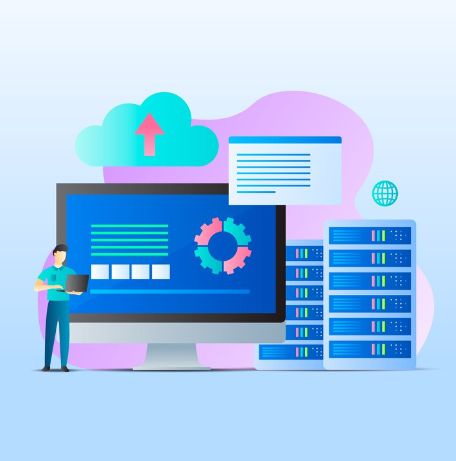In the dynamic world of data management, disaster recovery (DR) has evolved from a precautionary measure for rare catastrophic events to a daily necessity for business continuity. When it comes to safeguarding critical data, Storage Area Network (SAN) storage solutions have risen as the go-to technology for many organizations. But how can IT professionals leverage SAN storage to create robust and efficient disaster recovery strategies? This comprehensive guide is designed to answer that question and help you ensure that your disaster recovery plan stands head and shoulders above the rest.
The Role of SAN in Disaster Recovery
A Storage Area Network is a critical component of a robust disaster recovery strategy. SAN systems provide centralized, block-level storage that can be accessed by multiple servers in a high-availability environment. Unlike traditional storage solutions, SAN networks are highly scalable, offer improved performance with better bandwidth, and can be easily integrated into existing IT infrastructures.
Why SAN for Disaster Recovery?
- Reliability: SANs are designed to operate continuously, which is vital for a rapid disaster recovery process.
- Performance: High-speed data access and transfer are critical during recovery operations, and SAN solutions excel in this area.
- Scalability: With the increasing volume of data, SAN storage can be easily scaled to meet the growing storage demands of your organization.
- Centralization: By centralizing storage, SANs simplify the management of your disaster recovery environment, reducing the risk of human error.
Planning Your SAN-Based Disaster Recovery Strategy
Implementing a SAN-based disaster recovery strategy is a complex undertaking that requires careful planning and consideration.
Assessing Your Data Protection Needs
Start by conducting a thorough assessment of your data protection needs. Determine the Recovery Time Objective (RTO) and Recovery Point Objective (RPO) for each dataset. The RTO is the maximum tolerable length of time that a system or service can be unavailable, while the RPO dictates the maximum data loss tolerable in the event of a disaster.
Designing a Comprehensive DR Plan
Your disaster recovery plan should be comprehensive and cover every aspect of the recovery process, including data backup, storage, replication, and failover procedures. Utilize the strengths of SAN technology to offer real-time replication, data warehousing, and failover clustering to achieve a high level of redundancy and data protection.
Implementing High Availability with SAN
High availability (HA) is a critical capability within a disaster recovery plan, and SAN storage is an essential tool in achieving this.
Utilizing Redundancy in SAN Configurations
Implement redundant components across your SAN infrastructure to eliminate single points of failure. This includes redundant SAN switches, controllers, and power supplies.
Incorporating Geographic Redundancy
Consider establishing a secondary SAN system in a geographically separate location, ensuring that your data remains safe and accessible even in the event of a site-wide disaster.
Data Replication Techniques with SAN
One of SAN’s most powerful features for DR is data replication, which ensures that data is current and available at a secondary site.
Synchronous vs. Asynchronous Replication
Understand the trade-offs between synchronous and asynchronous replication. Synchronous replication offers no data loss and is ideal for mission-critical applications, albeit at a potential cost to performance. Asynchronous replication can offer a better balance of protection and performance, as it allows for slight delays in data transfers.
Implementing Consistent Snapshots
Leverage SAN’s snapshot technology to create point-in-time copies of your data, ensuring consistency and integrity for your backup and recovery operations.
Testing and Maintaining Your DR Plan
A disaster recovery strategy is only as strong as the plan behind it. Regular testing and maintenance are imperative to ensure that your DR plan is effective and up to date.
Performing DR Plan Simulations
Regularly simulate disaster scenarios to test the effectiveness of your recovery procedures. These simulations can uncover weaknesses in your plan that you can address before an actual disaster occurs.
Staying Up to Date with SAN Innovations
SAN technology is rapidly evolving. Stay informed about the latest innovations and best practices, as they could significantly enhance the effectiveness and efficiency of your disaster recovery solution.
Best Practices for SAN-Based DR
To ensure the success of your disaster recovery plan, adhere to these best practices.
Documenting Your DR Processes
Thorough documentation of your disaster recovery processes is vital. Ensure that all stakeholders have access to this documentation and that it is regularly updated.
Training and Skill Development
SAN-based disaster recovery involves complex technologies. Provide regular training for your IT team to ensure they have the skills to execute your plan effectively.
Leveraging Vendor Support
Don’t be afraid to utilize the support offered by your SAN storage vendors. They can provide valuable expertise and support to help you maintain and optimize your disaster recovery strategy.
Overcoming Common Challenges
Disaster recovery planning with SAN storage can present several challenges. Here’s how to address them.
Managing Complexity
The complexity of SAN systems can be daunting. Begin with a clear understanding of your current environment and a phased implementation approach to manage complexity.
Bandwidth Limitations
Considerations of network bandwidth are crucial, especially in replicating data to a remote site. Work with your network team to prioritize and optimize data transfer over your SAN network.
Balancing Costs and Benefits
SAN storage and related disaster recovery solutions can involve significant costs. Conduct a thorough cost-benefit analysis, and ensure that your spending aligns with the value of the data being protected.
Conclusion
Disaster recovery with SAN storage is an essential part of an organization’s IT strategy. By leveraging the features and benefits of SAN solution technology, you can create a robust, scalable, and efficient disaster recovery plan that ensures your critical data is protected and accessible at all times. Remember to plan strategically, test rigorously, and continually update your approach to DR to adapt to the dynamic IT landscape. With a solid disaster recovery plan in place, you can have peace of mind knowing that your organization is prepared to face any data-related catastrophe.


